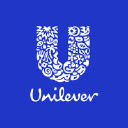🚀 Sign up Free for Public Company Valuation & Insights!
Sign up for free to get access to the best public company valuation and insights. Get started today and unlock the potential of your investments!
Sign up free Video Highlights
Unilever
Consumer goods / Consumer products
At a Glance | Core Facts | Company Due Diligence: | Industry Due Diligence: | Competitors | Stock Swings | News | Income | Balance | Cash Flow | Growth | Enterprise | Ratios | Metrics | Dividends | Risks | SWOT | Porter's Five Forces | PEST | Score Positive | Clusters | Reports | Web1. Regulatory Risk: Unilever must comply with applicable local, industry and global regulations. Changes in the regulatory landscape can significantly hinder or even halt innovation.
2. Risk of Economic and Market Changes: Unilever must remain in tune with ever shifting economic and market trends while innovating. This can be difficult, as not every risk can be anticipated.
3. Risk of Resource Misallocation: Unilever must be prudent in allocating its resources to innovation activities. If resources are misused or mismanaged, it can lead to poor returns on investments and a loss of resources.
4. Risk of Duplication: Unilever is a global company, and their innovations often cross lines into products that other companies have already tried. In this competitive market they must be careful to identify and mitigate the risk of duplication and to protect their own innovations.
5. Technology Risk: New technologies often introduce new risks into Unilever’s innovations, and staying ahead of the curve can be difficult with rapidly changing technologies. If Unilever adopts a technology too quickly, they risk losing competitive advantage.
Wait! There's more — sign up for free or log in